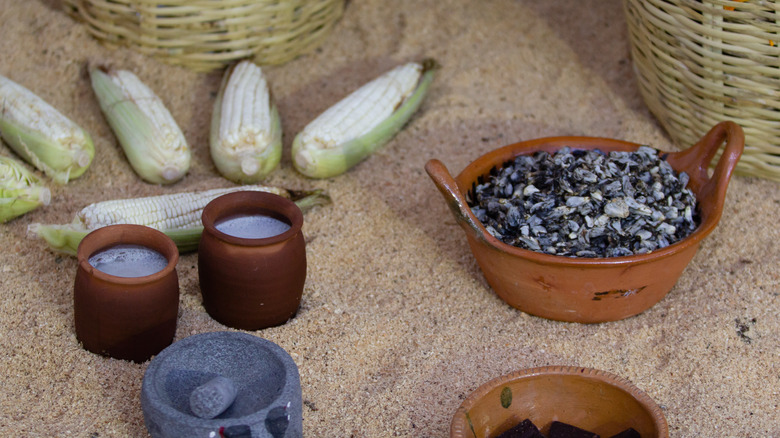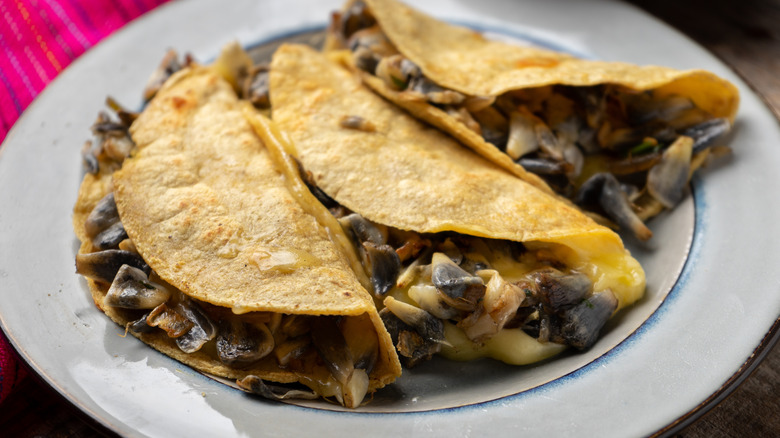What Is Huitlacoche And What's It Taste Like?
Get ready for huitlacoche, an underground delicacy in the U.S. that could very well be the next big thing in cooking. The newly sought-after ingredient is technically a type of fungus known as smut (or "devil's corn," in some locales) that grows on corn stalks.
Within the US farm community, even one speck of smut on an ear of corn means the entire ear gets thrown in the trash bin. NPR reports the ingredient, long a delicacy in Mexico, lately has risen to cult status in this country, with some chefs vying to add huitlacoche to their restaurant's menu.
The media outlet reports that while the cobs are typically thrown away here in the U.S., in Mexico some families will walk for miles through cornfields to gather the huitlacoche from cornfields, and then turn around and sell it for a tidy profit in local markets.
According to Food Republic, huitlacoche is thought of as a "Mexican truffle" and grows during corn season in North America. However, since huitlacoche is from the mushroom family of flora, the best time to harvest is after a spate of rain, which puts the prime season as May to November.
How do you cook with huitlacoche?
Seeing as huitlacoche grows on ears of corn, the spongy vegetable keeps a touch of sweetness from the corn while grounding the flavor with the woody earthiness of mushrooms.
Huitlacoche, pronounced weet-la-co-chay, (per YouTube), can be found in stores and farmer's markets. Typically, you'll find huitlacoche in jars, frozen, or sometimes in tins. While the preserved huitlacoche is darker and has more liquid, Aqui Es Texcoco tells us that buying fresh-from-the-market will be dryer and springier to the touch. If you'd like to cultivate your own, Food Republic recommends doing it when the fungus is still gray and spongy; if you wait until the huitlacoche hardens, the taste becomes bitter.
Use huitlacoche as you would mushrooms, raw or sauteed, or you can make huitlacoche tacos and showcase the vegetable as a star ingredient. As with mushrooms, huitlacoche turns dark when you cook it, so don't be alarmed when the color changes as you prepare your meal.

